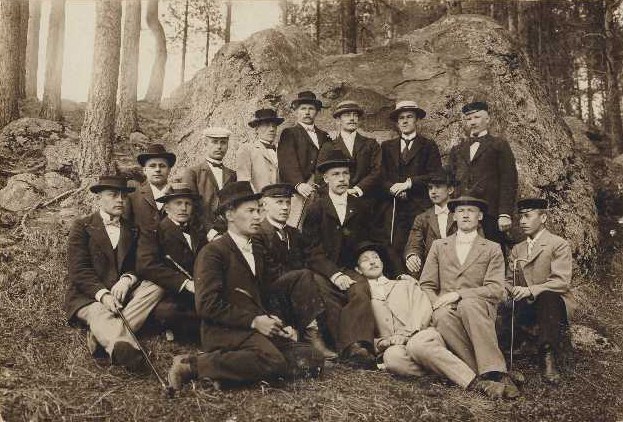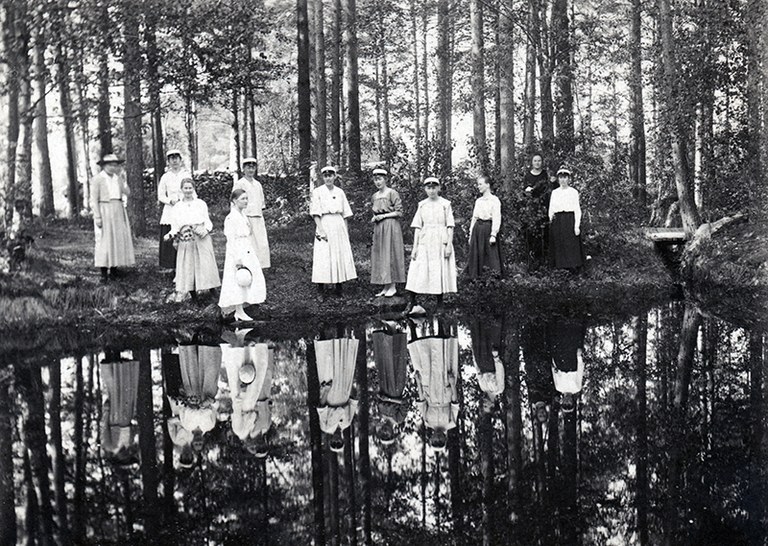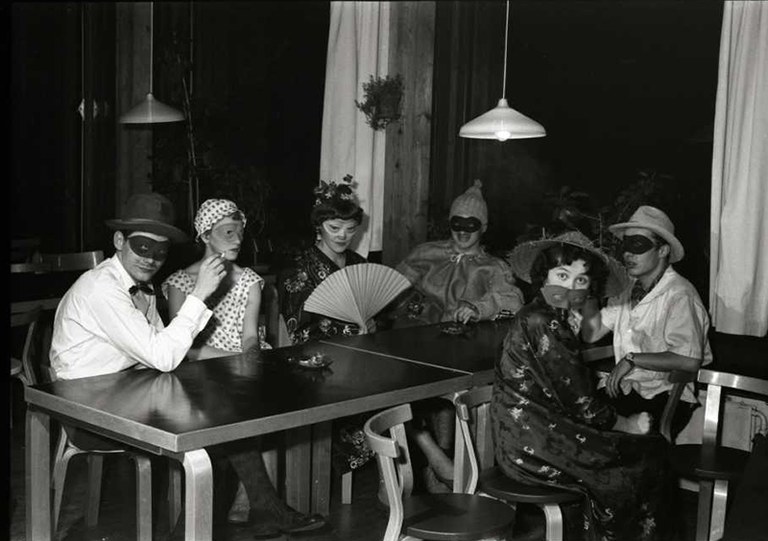Student's Campus
Ilokivi
The students of the Jyväskylä Teacher Seminary used to welcome spring at a large boulder called Ilokivi, located west of the Seminaarinmäki hill. The name Ilokivi comes from a poem in The Kanteletar, a collection of Finnish folk poetry. Students gathered at the stone to sing and give concerts for the city’s residents. The tradition was later continued on a smaller scale to celebrate the end of exam periods and alumni meetings.

”Lähtiessä laulamahan,
saa'essa sanelemahan
istumma ilokivelle,
laulupaaelle panemma,
kiven kirjavan selälle,
paaen paksun pallealle.”
Kanteletar, toinen kirja, runo 270
Kanteletar, Book 2, Poem 270
(literal translation:
‘While commencing singing,
and beginning recitation,
we shall sit on the joy stone,
take a seat on the rock bench,
on the boulder’s colourful back,
on the gut of the thick rock bench.’)
Student housing
In the days of the Teacher Seminary (1863–1937), students who came from outside of Jyväskylä lived in boarding houses (‘internaatti’) located in the Educa and Fennicum buildings on Seminaarinmäki. However, during the era of the College of Education (1934–1966), the number of students increased because there was a demand for new teachers after the war. The present Philologica building – called Naatti in those days – was constructed in 1954 in order to ease the lack of student housing. In the 1950s, there were strict rules on living and especially visits in the student housing. Exceptions to visiting rules between male and female student residence halls were made only in special cases, such as reciprocal visiting parades on St. Lucy’s Day. Even so, it was not uncommon for young male students to sneak into the female residence hall through the ground-floor windows.
At all times, students have also rented rooms from private homes close to their educational institutions – such as Tyyne Valkeajärvi’s home, known as Mammala (‘Grandma’s place’). Many detached houses in Mattilan¬pelto and Kukkumäki have also offered rooms for rent. In the late 1960s student housing took a completely new turn when the Student Union – after an intensive fundraising campaign – began construction of a student village in a new residential area in Kortepohja..
Moirislampi
In the early 1880s an artificial pond, named after an Egyptian flood lake, was constructed as a water resource for fire safety near the Teacher Seminary. The pond, which was filled at the end of the 1920s, was located near Building G and was much larger than the present Moirislampi located next to the Finnish Music Campus. The pond had two inlets, an island, a bridge, and a gazebo. The Teacher Seminary students liked to spend their free time at the pond. Female students – future primary school teachers (also called kansankynttilä, ‘candle of the people’) – celebrated the end of the spring term with nun parades: wrapped up in white sheets and carrying burning candles, they circled the area of the Teacher Seminary and gathered around the pond. Students also used to sink books of passed exams into the pond. One popular victim for this ritual was the elementary Swedish book ‘Alkeis-Jussi’, which also got a devout ‘funeral’ at Moirislampi in the spring.

Dance and celebration venues on the campus
Students have always celebrated festivals and public holidays by organising their own events. Music and theatre have played an important role in the celebrations – not to mention dancing. While the only dance that students could dance in the days of the Teacher Seminary was round dancing in Ryhtilä and Seminarium, the students of the College of Education and the University were allowed to organise more informal dances. Particularly popular partying venues were Lozzi after its completion in 1954 and Ilokivi after 1964.

The Taavettila barn
The Taavettila drying barn, which was renovated in the style of an Ostrobothnian farmhouse in the early 1900s, provided students at the Jyväskylä Teacher Seminary and College of Education with a great get-together venue. There they could gather in the spirit of regional traditions to sing, tell stories and listen to guest performers. The barn served as the club room for student associations, and later for the Student Union, until the 1960s. Even today, Taavettila is used as an atmospheric setting for different cultural events.